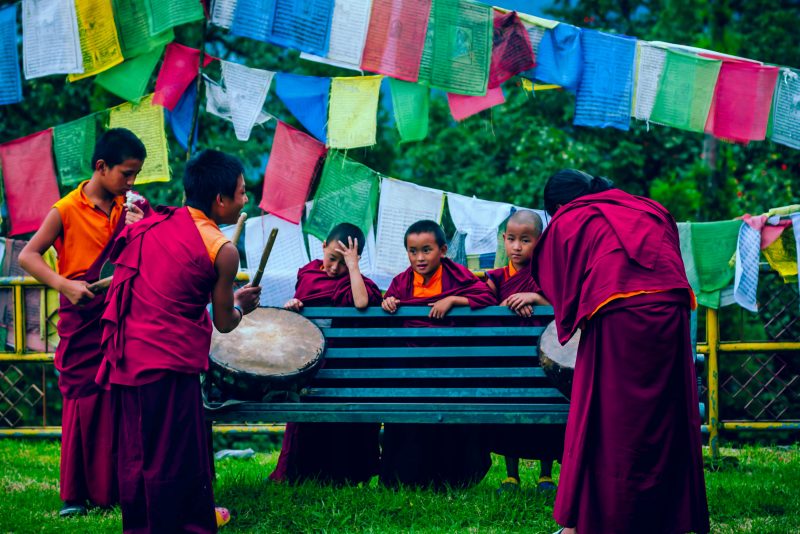Sikkim's eco-tourism evolution

Sikkim, India’s first organic state, lies in the north-east region of the country. Almost half the state is under forest cover, supporting many rare and indigenous species of flora and fauna, so it's no surprise that UNESCO recently recognised Sikkim‘s Khangchendzonga National Park as a world heritage site with tremendous natural and cultural importance.
With such an abundance of cultural beauty and biodiversity, tourism has mushroomed as a prime economic sector. According to the India Brand Equity Foundation, Sikkim’s economy is driven by the secondary and tertiary sectors. The tertiary sector alone is at about 48 percent, and includes trade, hotels, real estate, transportation, and communication as the main drivers, all of which are related to the tourism industry1. Tourist influx, and consequently, revenues from the sector have also gradually increased with better physical connectivity, and effective branding and promotion strategies.
But the state was wary of the impact that unregulated tourism could have on the environment and the communities affected by this influx of visitors. The concept of Ecotourism took center-stage in the state in 2002 when The International Ecotourism Society organised the South Asian Regional Conference on Ecotourism here. Immense focus was given to developing community-based tourism in the state, which grew around traditional village homestays to channelize benefits to rural communities.
“ Over the years, it has become the general consensus that despite regulations in place, sustainability isn’t a norm for tourism growth in the state.”
At the same time, in the six years from 2011-2017, the annual influx of domestic tourists into Sikkim more than doubled, from 550,000 to 1,375,0002. Some studies identify a positive correlation between the tourists‘ influx and growth of GSDP in the state3, with the Tourism sector contributing 7.68% to the Gross State Domestic Product of Sikkim4 in the year 2016-17. The sector also provides direct employment to some 40,000 people in the state, roughly 6.5% of the total population.
It is important to highlight here that despite a largely positive portrayal of the tourism sector, local populations and the environment both face grave challenges from the tourism boom.
- Unregulated expansion is manifested as ecological degradation of land and water resources, and threats to native biodiversity.
- Local people struggle to reap the benefits of economic opportunties created by their resources. A stark reflection is that 61% of workers in the tourism sector workforce are from outside the state.
Over the years, it has become the general consensus that despite regulations in place, sustainability isn’t a norm for tourism growth in the state. Citing grave concerns, civil society organizations consistently pushed for a pragmatic and radical tourism policy in the state to reduce the evident gap between conventional- and eco-tourism. Two major CSOs - the Ecotourism and Conservation Society of Sikkim and WWF Sikkim - gathered stakeholders from across the state to draft the Tourism Policy of Sikkim in 2018. The policy has since set the bar for environmentally, economically and socially sustainable tourism in the state.
To complement these policy measures, the state has also strengthened its stance on Ecotourism and recognised four ecotourism zones - Lingdok-Pangthang, Okharey, Kitam and East Pendam[v]. For the last two years, annual Ecotourism conclaves are being organsied to familiarise stakeholders, with a focus on tour operators, from within and outside the state. Institutes such as the Indian Himalayan Center for Adventure and Ecotourism were also established in an effort to build capacities of local tourism stakeholders.

Even from the Government’s side, there has been a constant emphasis on fostering prosperity in the rural areas. International aid, such as the Sikkim Biodiversity Conservation and Forest Management project funded by JICA, has helped local people leverage benefits through capacity building and training interventions. Initiatives such as the Okhrey Ecotourism Festival organised annually, also bring attention to ‘organic‘ facets of agriculture that are intricately linked to livelihoods of rural communities.
In situations where policy efforts are inadequate in combating the negative impacts of conventional tourism, many CSOs and Community organsiations have collectively demanded sustainable and responsible practices from tourists themselves. In 2012, WWF-India, with support from the Lachen Dzumsa (local administrative body) and the LTDC, took a pioneering step to implement a complete ban on the use and sale of packaged/bottled drinking water in Lachen. The Dzumsa legislation has been majorly successful because native Lachen residents have arranged for safe, alternative provisions for drinking water for the tourists.
The state’s transition to a sustainable and ecologically responsible tourism destination is underway. Development Alternatives and the Green Economy Coalition are pitching in their bit through the ‘Mainstreaming Green Economy’ initiative in India. Over the last few months, we have interacted with key local stakeholders such as Tourism, Urban and Rural development departments in Sikkim, ECOSS, WWF, Restaurant Associations, Taxi drivers’ associations and academia to understand their demands and aspirations for shaping the Ecotourism scenario in Sikkim.
Some of the key findings from our discussions were:
- Need of collecting systematic data and evidence on tourism related trends for planning based on the natural and social carrying capacity of the area
- Directing attention to revival of the handicrafts sector
- Streamlining start-up schemes to look for innovation in entrepreneurship and introducing radical parameters/conditions for issuance of loans from banks
- Penalisation and incentivisation for inculcating better waste management practices
- And, having an action oriented approach to issues with deeper involvement of CSOs and local people
Our initiative is striving to help by bringing together civil society voices in Sikkim to have a more inclusive planning process with the Government and take learnings to the ground.
Footnotes
Journal of International Academic Research for Multidisciplinary. ISSN 2320-5083, VOLUME 1-ISSUE 10-NOVEMBER 2013
Tourism and Civil Aviation Department, Govt. of Sikkim. Accessed October 2018. http://www.sikkimtourism.gov.i...
Journal of International Academic Research for Multidisciplinary. ISSN 2320-5083, VOLUME 1-ISSUE 10-NOVEMBER 2013


